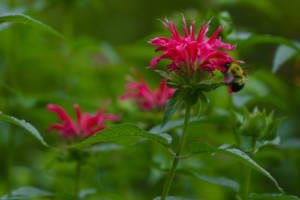 The Garden Design Process
The Garden Design Process
The Backyard Bounty team has designed nearly 500 gardens throughout the D.C. area including private residences, stormwater management facilities, kitchen gardens, parks and public spaces.
The goal of a good landscape design is to clearly develop and articulate a detailed vision for the client’s perfect outdoor living space while factoring in real-world conditions and constraints, advanced design concepts, environmental stewardship approaches, long-term maintenance needs, and aesthetic opportunities. There are many factors that go into making a successful design and we are committed to giving each its due.
We do this by following a structured process that provides for multiple iterations, ideas and inputs. From initial consultation through installation, we are constantly entertaining new ideas, researching different approaches, and making revisions. It’s more important to “get it right” than to “get it done”. We have found that the combination of a structured process and openness to change delivers the best long-term results.
Design Process Steps
- Initial consultation – a one hour on-site meeting with a Backyard Bounty designer to discuss goals, existing conditions, ideas and opportunities. In addition to discussing the site, the designer will ask about your long-term plans, how you like to use your outdoor living spaces, specific likes and dislikes, and other factors that will inform the design development.
- Site analysis – a detailed data-gathering exercise that includes plant inventory, dimensions, soil testing, topographical mapping, and drainage testing. Every site is unique and the information collected during the site analysis creates an accurate existing conditions map of the site which will inform every step of the design.
- Concept plan – a “sketch” document of the proposed garden created by pulling together information gathered from the client, data from the site analysis, and the ideas of the Backyard Bounty design team. The concept plan includes major components of the garden, proposed locations, and foundational elements such as stormwater management approaches and hardscape sites.
- Preliminary design review – Typically the longest meeting you will have with the Backyard Bounty design team. At this meeting, we review the concept plan with you in significant detail to ensure that the plan reflects your needs, vision and goals. We will also likely propose some ideas that may be new to you and explain the reasoning behind them. This meeting is as much “discussion” as it is “presentation” so be ready to be an active participant.
- Revisions – While incorporating the changes coming out of the preliminary review, we start including the details needed to develop the final design. These could be specific plant names and counts, stormwater management specifications, hardscape/construction specs, and a host of other items.
- Final design review – Presentation and discussion of a “near final” design. At this point, the design should reflect all the inputs, data, research, discoveries and new ideas throughout the process. While there are frequently some “final tweaks” to be made, the design is now substantially ready for installation. In addition to the design itself, we provide a detailed plant palette, any required stormwater management details, hardscape/construction specifications, proposed phasing and a budget for the installation.
Getting prepped for a successful design
Collect the following before the design process starts to help us create your perfect garden:
- A copy of your property plat or home survey (found in your home purchase documents)
- A list of your favorite plants as well as any that you don’t like or are allergic to
- Pictures of gardens that you enjoy or find beautiful. Platforms such as Pinterest are a great tool for collecting and sharing
- Budget expectations
- A description of how your use your garden now and how you would like to use it in the future
- Detailed descriptions of any stormwater, drainage or pest issues (e.g. a video of water in your yard during a heavy rainstorm)
